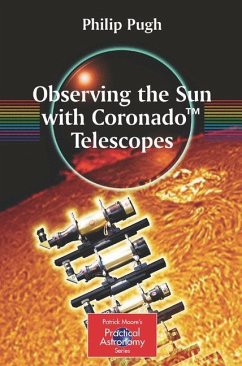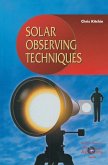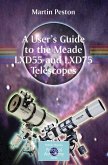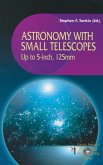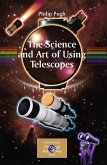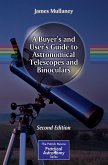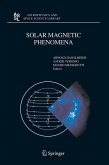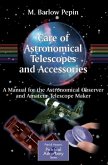Scientists will often tell you that now is the most exciting time for a particular interest. We will always have just discovered or invented something that will "revolutionize" something or the other. The computer on which I am typing this, for example, is four times faster than its predecessor and slightly cheaper. However, the last decade or so has seen some advances that have changed the face of amateur solar astronomy. Professional researchers have been using many of the tools and techniques for years but now they are available to amateurs as well. The use of digital photography and computers has changed all astronomy, not just amateur solar astronomy, and it has certainly made a lot more techniques available for photographing the Sun. Secondly, the use of "white light" solar filters has improved the detail that can be seen on the solar surface. In the past, the only technique that was available was projection onto a piece of white paper or card. Thirdly, the use of hydrogen alpha filters has recently hit the "affordability barrier" of $500 or £500 for many amateur astronomers. The Coronado Personal Solar Telescope (PST) is a real breakthrough product that has now brought a fascinating branch of astronomy within the reach of many people. In recent months, the same technique has been applied to calcium K filters.
From the reviews:
"Observing the Sun is becoming more and more popular these days ... . there's a whole range of Coronado solar telescopes on offer. This book aims to clarify the differences between them and give you solid advice on what each one can do. ... The chapters are well written and comprehensive. ... this is actually a very useful resource if you're interested in pursuing solar observing or imaging - not just if you have a scope made by Coronado in your garage. ... it's highly recommended." (Pete Lawrence, BBC Sky at Night, April, 2008)
"Philip Pugh's new book, which includes contributions from several expert coauthors, covers more ground than its title suggests - including gear from other manufacturers. ... I think it serves as a valuable reference and a worthwhile review of the current state of the art of daytime amateur astronomy." (Rick Fienberg, Sky and Telescope, July, 2008)
"This book does exactly what it says on the cover and more. It covers the whole gambit of solar observation in both red hydrogen light (hydrogen-alpha) and violet calcium light (CaK) and is profusely illustrated with telescopes, accessories and innumerable solar images. ... The text is upbeat ... . this is an excellent book and essential reading for all interested in this fascinating area of observation - no less in that it occurs at sociable daylight hours!" (Maurice Gavin, Astronomy Now, June, 2008)
"This book provides a wealth of useful information on choosing the right telescope, what accessories work best with those instruments, the use of cameras and CCD detectors, and the post-processing of their images. There are copious illustrations of both the instrumentation and the results ... . I have no hesitation in recommending this book. For potential buyers of such telescopes this book is well worth ... . Philip Pugh and his co-authors are to be congratulated on a very useful guide." (Steve Bell, The Observatory, Vol.128 (1206), October, 2008)
"This book aims to review the options available as well as briefly covering equipment from other sources. ... I would be very happy to recommend this book to anyone who is considering the purchase of equipment to image our Sun in narrow-band hydrogen-alpha light. It does a good job of reviewing the options available and the best photographs really do show the amazing images that can be seen visually and recorded for later enhancement using a variety of image processing techniques and software." (Peter R. Hobson, Contemporary Physics, Vol. 50 (5), September-October, 2009)
"Observing the Sun is becoming more and more popular these days ... . there's a whole range of Coronado solar telescopes on offer. This book aims to clarify the differences between them and give you solid advice on what each one can do. ... The chapters are well written and comprehensive. ... this is actually a very useful resource if you're interested in pursuing solar observing or imaging - not just if you have a scope made by Coronado in your garage. ... it's highly recommended." (Pete Lawrence, BBC Sky at Night, April, 2008)
"Philip Pugh's new book, which includes contributions from several expert coauthors, covers more ground than its title suggests - including gear from other manufacturers. ... I think it serves as a valuable reference and a worthwhile review of the current state of the art of daytime amateur astronomy." (Rick Fienberg, Sky and Telescope, July, 2008)
"This book does exactly what it says on the cover and more. It covers the whole gambit of solar observation in both red hydrogen light (hydrogen-alpha) and violet calcium light (CaK) and is profusely illustrated with telescopes, accessories and innumerable solar images. ... The text is upbeat ... . this is an excellent book and essential reading for all interested in this fascinating area of observation - no less in that it occurs at sociable daylight hours!" (Maurice Gavin, Astronomy Now, June, 2008)
"This book provides a wealth of useful information on choosing the right telescope, what accessories work best with those instruments, the use of cameras and CCD detectors, and the post-processing of their images. There are copious illustrations of both the instrumentation and the results ... . I have no hesitation in recommending this book. For potential buyers of such telescopes this book is well worth ... . Philip Pugh and his co-authors are to be congratulated on a very useful guide." (Steve Bell, The Observatory, Vol.128 (1206), October, 2008)
"This book aims to review the options available as well as briefly covering equipment from other sources. ... I would be very happy to recommend this book to anyone who is considering the purchase of equipment to image our Sun in narrow-band hydrogen-alpha light. It does a good job of reviewing the options available and the best photographs really do show the amazing images that can be seen visually and recorded for later enhancement using a variety of image processing techniques and software." (Peter R. Hobson, Contemporary Physics, Vol. 50 (5), September-October, 2009)

